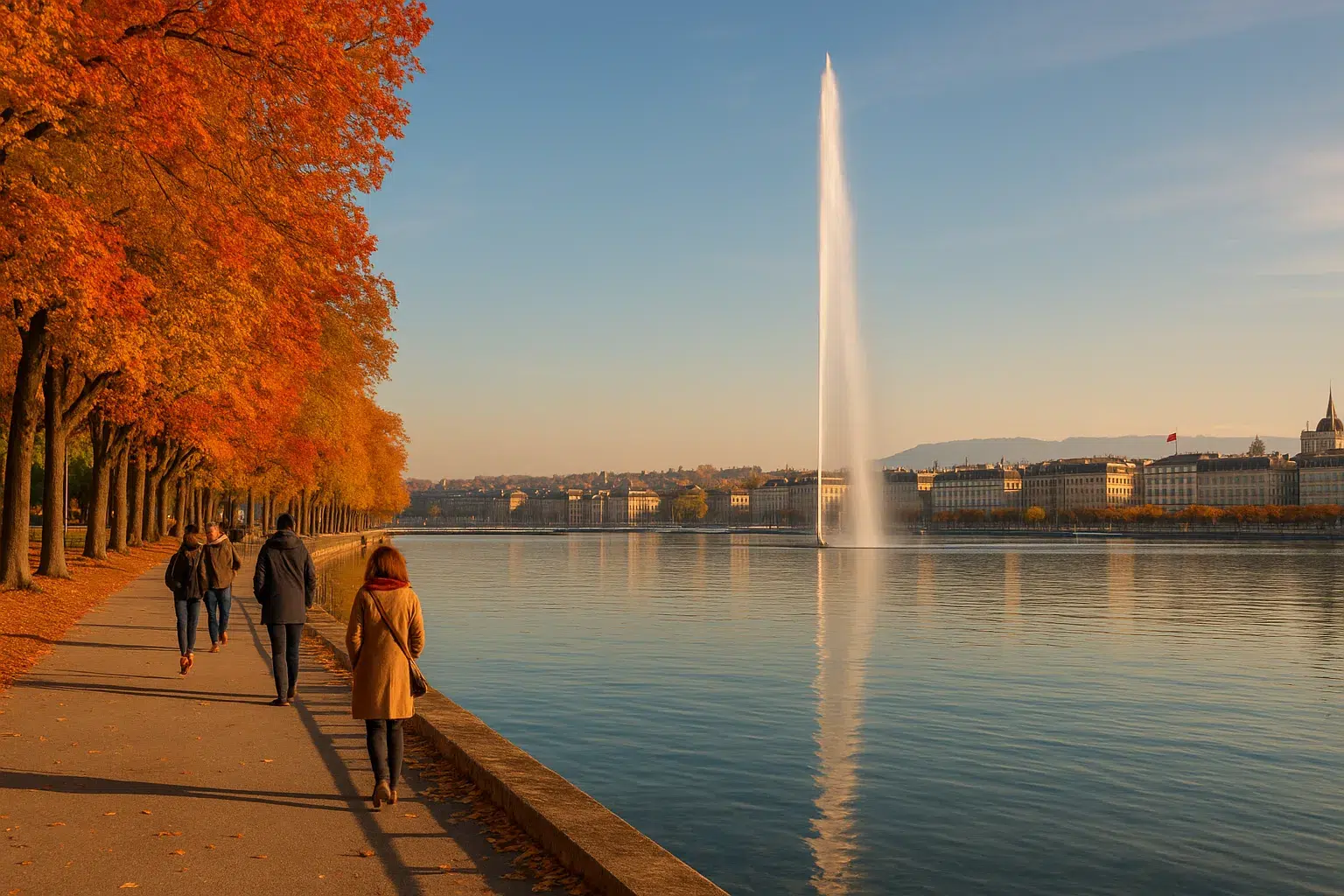Planning an autumn trip to Switzerland? October is a month of breathtaking transformation, where the landscape shifts from the vibrant greens of summer to a spectacular tapestry of gold, amber, and crimson. Understanding the climate in Switzerland in October is key to packing correctly and planning your activities. As a transitional month, it offers a unique blend of late-summer warmth and the first clear hints of the approaching winter.
In essence, October in Switzerland is characterized by crisp, fresh air, significantly fewer crowds, and a stunning display of autumn foliage. However, the weather is not a monolith; it varies dramatically depending on your altitude and region.
The Big Picture: What to Expect from the Swiss Climate in October
Meteorologically, October sits firmly within the autumn season. The long, warm days of summer are a memory, replaced by shorter days and a noticeable chill, especially in the mornings and evenings.
- Temperatures: Across the lower-lying areas and major cities like Zurich, Geneva, and Lucerne, you can expect average daytime highs to range from a pleasant 12°C to 17°C (54°F to 63°F). Night-time temperatures, however, can drop sharply to between 5°C and 9°C (41°F to 48°F).
- Sunshine and Rain: Sunny days are common, but they are interspersed with periods of rain and overcast skies. According to MeteoSwiss, the national weather service, October is generally drier than September in the northern parts of the country, but the weather becomes increasingly unstable as the month progresses.
- The Föhn Effect: A unique weather phenomenon to be aware of is the Föhn, a warm, dry wind that can descend from the Alps into northern valleys. During a Föhn event, temperatures in a city like Lucerne can unexpectedly spike, creating beautifully clear, warm conditions while the southern side of the Alps experiences cloud and rain.
A Tale of Two Altitudes: Lowlands vs. The High Alps
The single most important factor influencing your experience is altitude. The climate in Switzerland in October splits into two distinct stories.
In the Cities and Lowlands:
Cities like Zurich, Geneva, Bern, and Basel are often draped in a romantic, autumnal glow. This is a fantastic time for urban exploration, lakeside strolls, and visiting museums. The foliage in parks and along lake shores is spectacular. While you’ll likely enjoy many sunny days perfect for a light jacket, always have a raincoat or umbrella handy. Mornings can be misty, particularly near lakes and rivers, burning off to reveal brilliant blue skies.
In the Mountains:
The story changes as you ascend. While lower mountain areas like the Jungfrau Region or Zermatt are in the peak of their autumn beauty, the high alpine climate undergoes a significant shift.
- Snowfall Begins: By mid to late October, the first significant snowfalls of the season typically dust the highest peaks above 2,500-3,000 meters (8,200-9,800 ft). This creates a stunning photographic contrast of white-capped mountains against golden larch forests.
- Hiking Trail Closures: Many high-alpine hiking trails, especially those crossing high passes, begin to close for the season due to snow and ice. It’s crucial to check local conditions with the tourist office or on hiking platforms like SchweizMobil before setting out.
- A Shoulder Season for Resorts: Many mountain resorts in lower-altitude areas enter a quiet “shoulder season” period between summer and winter sports. Some cable cars and hotels may close for maintenance, so advance planning is essential.
Regional Variations: From Sunny Ticino to the Engadin Valley
Switzerland’s complex topography creates distinct microclimates.
- Southern Switzerland (Ticino): South of the Alps, the canton of Ticino, with its Italian-speaking cities of Lugano and Locarno, enjoys a noticeably warmer and sunnier climate in Switzerland in October. You have a higher chance of balmy days where sitting at a lakeside café is still a joy. It’s one of the best regions for extended outdoor activities and enjoying Mediterranean-style gardens.
- The Engadin Valley: In contrast, high-altitude valleys like the Engadin in Graubünden (home to St. Moritz) are already much colder. Daytime temperatures might struggle to reach 10°C (50°F), and night-time frosts are common. This is the place to experience a true, crisp alpine winter preview.
Packing for the October Climate in Switzerland
Packing for October requires a strategy of layers.
- The Base Layer: A merino wool or synthetic thermal layer is invaluable for chilly mornings and mountain excursions.
- The Mid Layer: A fleece, sweater, or light down jacket provides core warmth.
- The Outer Layer: A waterproof and windproof jacket is non-negotiable. A compact umbrella is also a wise addition.
- Footwear: Sturdy, waterproof walking shoes or boots are ideal. They will keep you comfortable on city cobblestones and damp forest paths alike.
- Accessories: Don’t forget a warm hat, gloves, and a scarf, especially if you plan to go up into the mountains or take early morning train journeys.
Embracing the Season
Ultimately, visiting Switzerland in October is a rewarding experience for those who appreciate dramatic landscapes, quieter attractions, and the crisp feel of autumn. By understanding the nuances of the climate in Switzerland in October, you can perfectly prepare for a journey through a country that is, for a few glorious weeks, dressed in its most golden attire.



